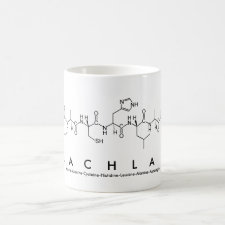
Authors: Schwarz LJ, Leung BKY, Danylec B, Harris SJ, Boysen RI, Hearn MTW
Article Title: Phytosterol Recognition via Rationally Designed Molecularly Imprinted Polymers.
Publication date: 2018
Journal: C
Volume: 4
Issue: (1)
Page numbers: ArticleNo13.
DOI: 10.3390/c4010013
Alternative URL: http://www.mdpi.com/2311-5629/4/1/13/htm
Abstract: Molecularly imprinted polymers (MIPs) prepared via a semi-covalent imprinting strategy using stigmasteryl methacrylate as a polymerisable template have been evaluated by static binding methods for their ability to selectively capture other valuable phytosterol targets, including campesterol and brassicasterol. Design criteria based on molecular modelling procedures and interaction energy calculations were employed to aid the selection of the co-monomer type, as well as the choice of co-monomer:template ratios for the formation of the pre-polymerisation complex. These novel hybrid semi-covalently imprinted polymers employed N,N'-dimethylacryl-amide (N,N'-DMAAM) as the functional co-monomer and displayed specific binding capacities in the range 5.2-5.9 mg sterol/g MIP resin. Their binding attributes and selectivities towards phytosterol compounds were significantly different to the corresponding MIPs prepared via non-covalent procedures or when compared to non-imprinted polymers. Cross-reactivity studies using stigmasterol, ergosterol, cholesterol, campesterol, and brassicasterol as single analytes revealed the importance of the A-ring C-3-β-hydroxyl group and the orientational preferences of the D-ring alkyl chain structures in their interaction in the templated cavity with the N,N'-dimethylamide functional groups of the MIP. Finally, to obtain useful quantities of both campersterol and brassicasterol for these investigations, improved synthetic routes have been developed to permit the conversion of the more abundant, lower cost stigmasterol via a reactive aldehyde intermediate to these other sterols
Template and target information: stigmasteryl methacrylate, phytosterols, campesterol, brassicasterol
Author keywords: Phytosterols, molecular modelling, interaction energies, Molecularly imprinted polymers, selectivity



Join the Society for Molecular Imprinting

New items RSS feed
Sign-up for e-mail updates:
Choose between receiving an occasional newsletter or more frequent e-mail alerts.
Click here to go to the sign-up page.
Is your name elemental or peptidic? Enter your name and find out by clicking either of the buttons below!
Other products you may like:
 MIPdatabase
MIPdatabase









